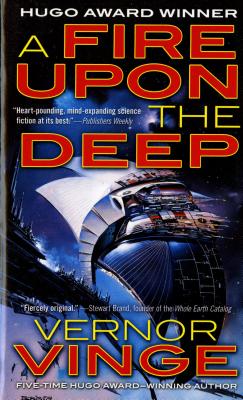A Fire Upon the Deep
Vernor Vinge

I read this book on the recommendation of a friend of mine, although the conversation was long enough ago that I don’t remember exactly what he said about it. I found it to be a good but not great sci-fi novel. The main conceit that drives the in-book world is that the galaxy is (inexplicably, naturally) divided into four “zones” that affect what technology is capable of functioning there: an inner core where no technology or recognizable intelligence can function, a second layer where things approximating modern earth technology through low sci-fi technology (think sublight interstellar travel with cryogenic hibernation), a third layer where typical “high sci-fi” technology works (think classic space opera with faster-than-light travel, functioning artificial intelligence), and an outer layer that is somewhat mysterious but harbors ultra-advanced, “Singularity”-type AIs. This setup allows for interesting plot construction in terms of how actors in certain zones are or are not able to influence events in other zones, and allows a story in which actors at every one of the non-dead levels have significant roles to play. It is a clever invention; reminds me somewhat of the way Frank Herbert specified energy shield technology in “Dune” to give a significant role to sword-fighting even in a society with advanced technology. Despite all that, though, I only found the story of AFUTD to be moderately engaging, and in particular, did not become especially invested in any of the characters. I enjoyed reading it, but am not planning to pick up any of the related books.